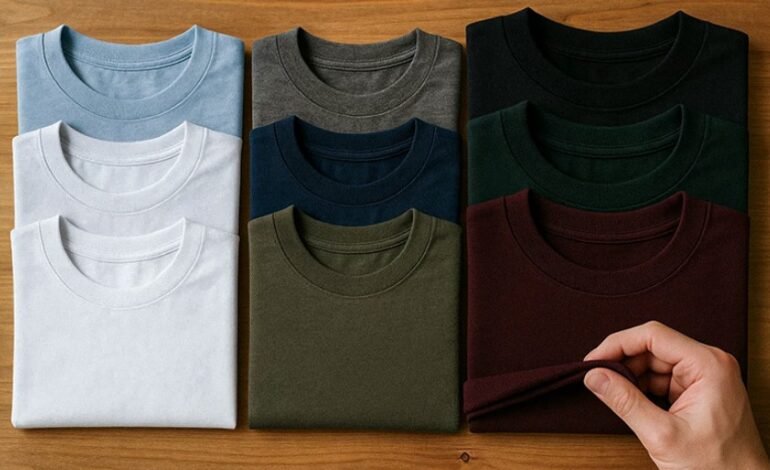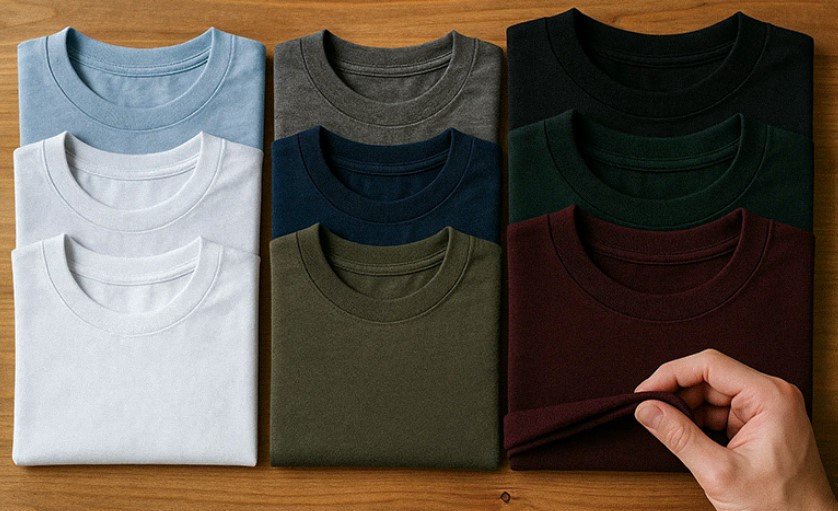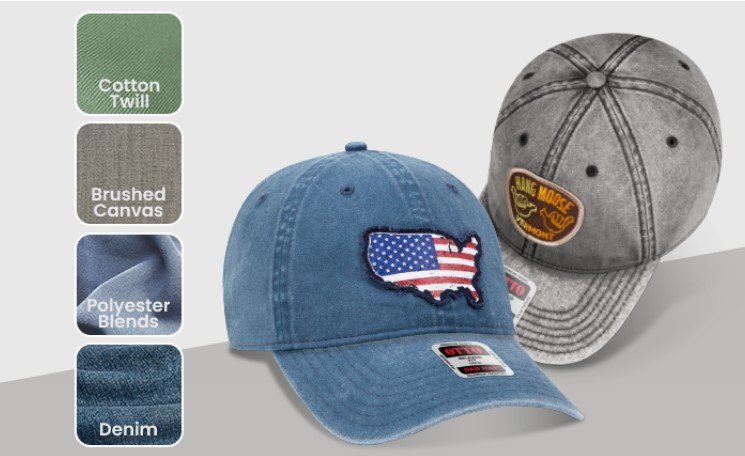Quick Guide to T-Shirt Weight: Choosing Between Heavyweight & Lightweight Tees

There are times when we notice the weight of the t-shirts we wear just out of the blue. Some t-shirts feel like you are wearing a cloud while others feel more snug and durable. We know t-shirts aren’t built the same. But do we know how exactly this “build” dictates the comfort, feel, performance and even customizability of t-shirts?
If you’ve ever wondered why your favorite thick cotton t-shirt holds up after dozens of washes and rough use, it has a lot to do with fabric weight and thread count. This little write-up will help you understand what those numbers mean – and how they impact comfort, durability, and style.
Now here’s the essential t-shirts guide well-intended to make things easier for you.
What Does T-Shirt Weight Mean?
“A lightweight summer t-shirt made of jersey should have a GSM number between 120-160, while a heavyweight t-shirt for colder months comes between 200-300 g/m2.”
That’s the industry standard currently, till we get another fabric evolution that will change the whole game. Like how AI is doing to computing today.
T-shirt weight is a really important indicator of its fabric density. It’s commonly measured in GSM (grams per square meter) or oz/yd² (ounces per square yard). A higher GSM or oz/yd² generally means a denser weave and a fabric that’s more durable. Think of it this way: a thick cotton t-shirt will have a higher GSM than a thin, airy one. This measurement directly impacts how your shirt feels, looks, and performs over time.
Here’s a general t-shirt weight chart to give you an idea:
- Lightweight: 120–160 GSM. These tees are typically breathable and excellent for warm climates.
- Midweight: 160–200 GSM. For those who want a good balance of comfort and durability for everyday wear.
- Heavyweight: 200+ GSM. These shirts offer a different dimension of comfort and are built to last.
GSM vs. Thread Count: What’s the Difference?
The terms can confuse buyers. GSM and Thread Count measure different aspects of a t-shirt’s fabric. While the former is associated with the overall weight of the fabric which you can use to understand the garment’s thickness and density, the latter is associated with the feel and smoothness of the fabric material itself.
Thread count refers to the number of threads woven into one square inch of fabric. T-shirts with a higher thread count will likely have a silkier texture. While a higher GSM usually means better durability, a high thread count makes the t-shirt feel softer to touch. However, a high thread count doesn’t necessarily make the t-shirt fabric stronger. Thread count and GSM (grams per square meter) are often used interchangeably but they are not the same. So understanding GSM vs thread count in t-shirts is how you make an informed choice every time.
Heavyweight vs. Lightweight T-shirts: A Quick Comparison
| Feature | Lightweight T-Shirts | Heavyweight T-Shirts |
| GSM Range | 120–160 GSM | 200+ GSM |
| Feel | Soft, airy & breathable | Structured, durable & warm |
| Best Suited For | Summer wear, workouts, layering, casual | Fashion/streetwear, casual, winter layering, workwear |
| Pros | May be quick-drying, comfortable in heat, easy to wear, easier to repurpose, more fabric variety | Long-lasting, holds shape well, cozier, less transparent |
| Cons | Typically flimsy, can get wrinkled quickly, less opaque | Heavier feel, longer drying time, may feel stiff |
Heavyweight t-shirts for men and women are common in streetwear and now even in professional environments. Lightweight tees are commonly seen in athletic and casual applications.
Popular heavyweight fabrics include ringspun cotton, and 100% combed cotton. Lightweight fabrics have a lot more variety in the form of cotton-poly blends, tri-blends, and linen combinations that prioritize breathability over longevity.
Choosing the Right Weight for Your Needs
Choose Lightweight T-Shirts For:
- Hot weather activities and summer travel
- Sports and workout sessions
- Promotional events and giveaways
- Layering under thicker garments like jackets
Choose Heavyweight T-Shirts For:
- Street-smart looks
- Work uniforms requiring durability
- Custom embroidery projects (thicker fabric holds detail better)
- Premium retail merchandise
Make sure to take a look at your t-shirt weight chart requirements carefully before making purchasing decisions.
Does Thread Count Matter for T-shirts?
Yes, but perhaps not in the way you think for bedsheets. For t-shirts, thread count impacts softness and texture more than overall durability. That means tees with a lower thread count might develop pills more quickly. A combination of ringspun cotton and a higher thread count often provides the best of both worlds: comfort and a smooth feel. Also, unlike bedsheets, t-shirt thread count isn’t always advertised. It’s always best to get a feel of the fabric in person to understand the softness and quality of high thread count t-shirts.
T-Shirt Buying Tips
To make an educated purchase:
- Always check the fabric composition and GSM if listed.
- Feel the shirt for texture and stretch.
- Ask yourself: “Do I prioritize comfort, breathability, or plain durability?”
The process becomes relatively easier when you buy in bulk from wholesale sources online. There are many wholesale brands that perfectly describe how their t-shirts would fit and feel, the fabric composition, the GSM range, and sometimes even the thread count. These sources offer t-shirts from leading t-shirt brands like Gildan, Core 365, Comfort Colors, Team 365, American Apparel, Bella + Canvas, and more, with more than enough information to help you make good decisions. The sizing will also be consistent if you plan to order in batches.
Wholesale t-shirt stores can make finding the best fabric for t-shirts easier, if you know what exactly you want on your t-shirts.
You may be looking for a feather-light tee or something stiffer, cozier, and more durable. Your understanding of fabric weight and thread count will help make smarter purchases and define your t-shirt experience here.
feather-light tee or a substantial, long-wearing shirt, understanding fabric weight and thread count will define your t-shirt experience. These specifications empower you to shop smarter and get better value on the money you spend.
Now buy better, print smarter, and share the knowledge.













